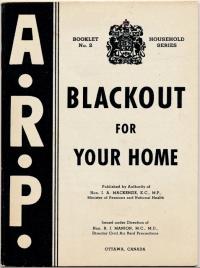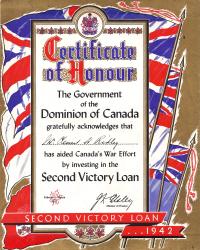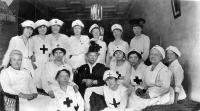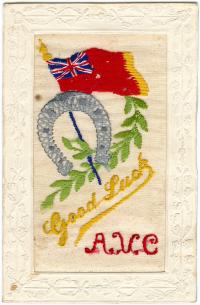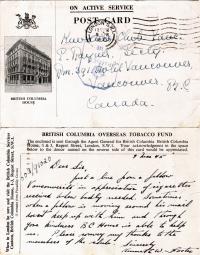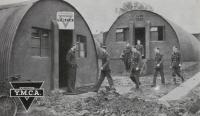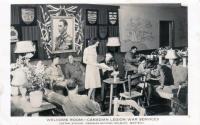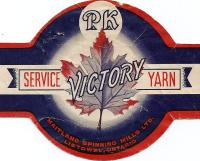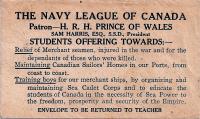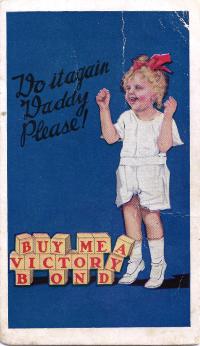Volunteering
Introductory Essay
Blackout for the home
Communities often relied on blackout techniques to conceal residential areas from enemy airmen. This booklet educated civilians on the regulations and procedures associated with preparing one's house both inside and out.
A Victory Bond buyer lives here
These cards were intended to be placed in a home or business window, as proof that the individual had supported the war effort by purchasing Victory Bonds.
"The girls in the Red Cross tea shop"
These women, all of whom are identified on the back of the photograph, served snacks to soldiers at a tea shop run by the Canadian Red Cross Society in Hamilton, Ontario.
Crafts from the front
Silk postcards were very popular souvenirs for soldiers during the First World War, and provided an important source of income for French and Belgian handicraft workers.
Thanks for the cigarettes ...
Many groups in Canada, including the Vancouver Kiwanis Club through the British Columbia Overseas Tobacco Fund, the Overseas League (Canada) Tobacco and Hamper Fund of Toronto, Ontario, employers, and relatives, sent cigarettes to soldiers, and received postcards of acknowledgement and thanks in return.
The YMCA at War
Postcards produced by the YMCA, such as this one showing members of the RCAF going into a YMCA hut at an airfield in England, were distributed free of charge to Canadians overseas.
The Legion's war work
The Canadian Legion funded and staffed welcome rooms at major railway stations across Canada, where servicemen and women could relax while waiting for a train.
Knitting socks for soldiers
The label confirmed that "There is sufficient yarn in this ball to knit one pair of service socks."
Collecting from students
Every member of society was expected to donate to patriotic causes - this envelope was distributed in schools so children could donate in support of Canadian seaman.
"Buy me a Victory Bond, Daddy"
Fund-raising advertisements often used images of children to encourage their parents to donate generously.

